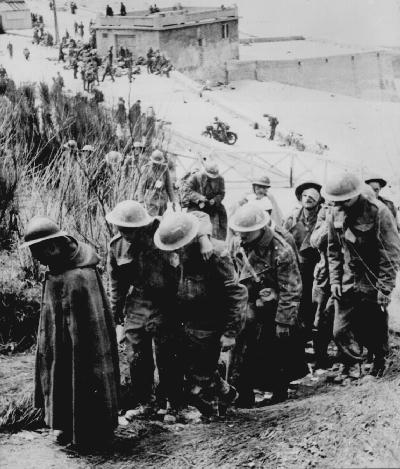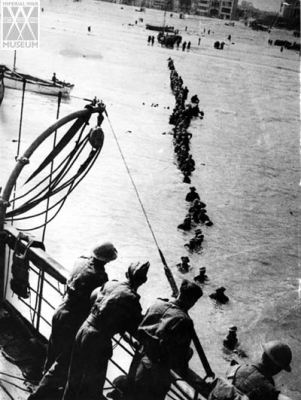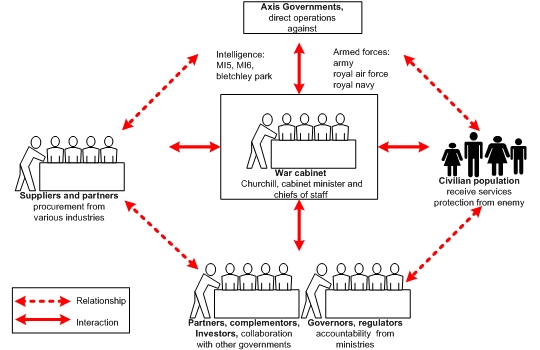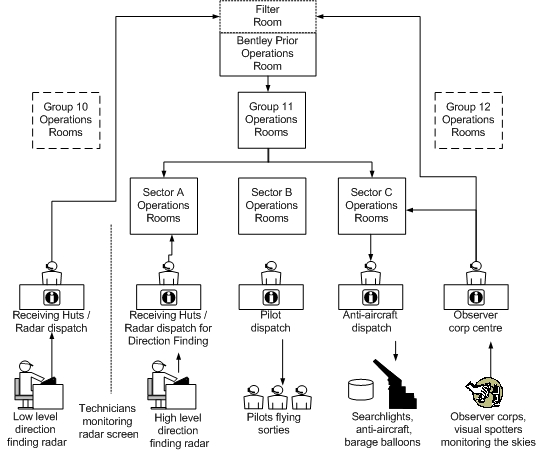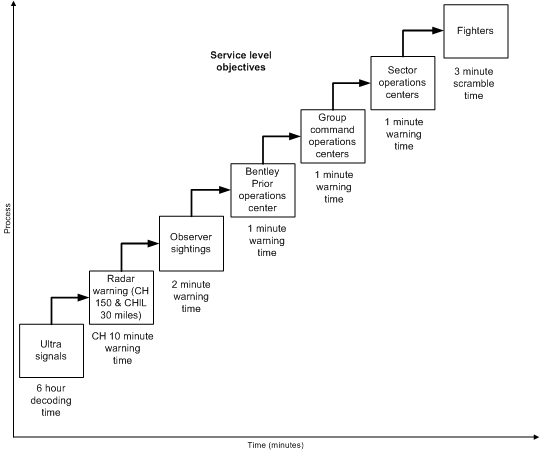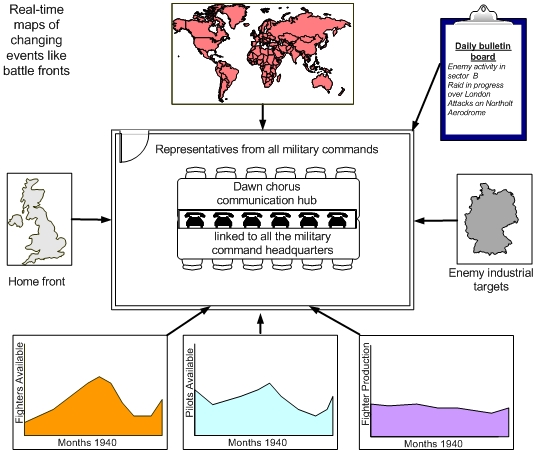LFH Overview
Churchills Adaptive Enterprise
Churchill's Adaptive Enterprise
Lessons for Business Today
SummaryThe concept of an Adaptive Enterprise is relatively young, and with recent advances in technology it is within the reach of today’s organizations. Simply put, in an Adaptive Enterprise the use of technology can modify the way an organization behaves, namely in how it wrestles with change. To help visualize the capability of an Adaptive Enterprise, this Knowledge Brief presents an example that surprisingly was created back in 1940, in a very dire situation. Not only did it work, but it surpassed all expectations of the time and was instrumental in changing the course of history.
Paperback: 304 pages Publisher: Multi-Media Publications Inc. (July 1, 2005) Language: English ISBN-10: 1895186196 ISBN-13: 978-1895186192 |
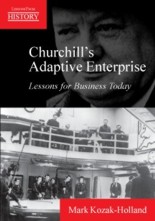 |
BackgroundThis is the story of how one man under tremendous pressure inspired a nation to continue a fight considered lost. As a result, he created the equivalent of a modern day Adaptive Enterprise, using the emerging technologies of the day. In May 1940, after the fall of France, Winston Churchill was swept into power. Not only did he have to stave off an imminent enemy invasion but he had to quickly move the peacetime economy to one that could support a war. This meant focusing slender resources on the immediate threat, unifying a disparate economy, and directing its output into immediate military use. With very little time Churchill had to transform his organization to an Adaptive Enterprise so it could adapt to this unexpected situation. Of course he had to get it right the first time and make the investments count.
Bleak SituationEven though the nation’s army had been saved, Dunkirk was a disaster in terms of losses of fighters, naval ships, and military equipment. With invasion imminent Churchill and his architects had to come up with something to save the situation as after all the very survival of the United Kingdom was at stake. However, by June 1940 the race to reach a target (set in 1939) of 1,200 fighters was lost. Horrendous losses in the previous campaigns of Norway and France had depleted the Royal Air Force (RAF) Fighter Command of 50% of its fighter strength. The RAF now with 675 fighters faced the Luftwaffe’s 3,500 aircraft (1,100 fighters). The total UK factory output of 200 fighters per month could not possibly produce enough in fighters in time for a prolonged air battle.
TransformationChurchill’s bigger vision was expanding the war and creating an alliance with the United States. But in the meantime, the UK had to hold its own. On May 22, Parliament granted Churchill government-wide emergency powers and the complete control of what had to done.
End goalIn the short term Churchill had to solve the problem of setting up an adequate defense, and increasing the RAF fighter capability by addressing the fighter production problems. In the longer term, if Churchill could repel the invasion, against all odds, then he had to move quickly into a position to wage total economic warfare for many years. For this he had to transform the UK economy right away and this would require a basic restructuring at many levels, and putting it onto a war footing so that it could sustain total war.
|
|
Supply Chain
Unifying a disparate peace-time economy was not easy and complicated by having to deal with so many disparate entities from within countries, sectors, industries, corporations, organizations, institutions, and groups. This included Allied countries versus those within the British Empire; civilian versus military and intelligence organizations; the public versus private sector; commercial versus academic organizations; and industrial production of basic commodities versus armaments. In addition the UK was the most industrialized country in the world, but it was also over-populated. Almost all raw materials except for coal were imported including wood, oil, and two-thirds of the food. A war economy would have to be run like a supply chain, where everything from raw materials, to production, to distribution would be carefully managed.

Governance Framework
To enable the transformation of fighter production and the UK economy Churchill needed a governance framework to sustain this over many months. It would require a collection of people and resources that had the legitimacy and authority to take actions needed to ensure the transformation was swift and managed effectively. They had deal with adoption, selling the nation, and build plans to overcome barriers to a successful transformation.
Deconstruction of Silos - Reconstruction of the Organization
Churchill’s disparate organizations consisted of government, military, and civilian groups. These had unique cultures, were well-organized and highly institutionalized structures, and used to working in their own ways. The armed forces had evolved independently, without a need to interface with each other, and had even created their own lexicons. The Royal Navy considered itself unique, and was reluctant to closely cooperate or share resources with the British Army and Royal Air Force. After Dunkirk each arm of the military jockeyed for more resources. Even the Air Ministry chiefs saw the answer in producing more bombers in preference to fighters. Logic had to prevail as both the army and navy would be ineffective without adequate fighter air cover. More importantly Churchill had to break down the barriers between vertical organizations and vertical operations and reconstruct them to work harmoniously together. Churchill started the process by incorporating the command structures of the military into his command center at Storey’s Gate.
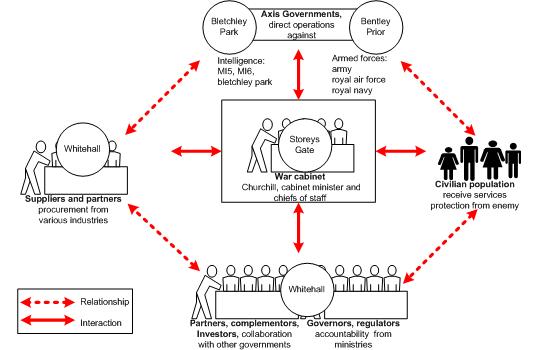
Difficult Investment ChoicesTo meet the short term goals a radically different approach was required not only in the production of fighters but how they would be deployed in operation. Increasing fighter production was not enough. In short the ability to respond to incoming attacks by targeting available fighters to only where they were needed. This is very much the same problem that organizations face today the agility to respond to changes. Churchill’s architects had to resist pressures, politics, and narrow down the many technology options to something manageable, and that could be delivered. They presented Churchill a few rough “technology diamonds” that have shown a lot of promise in development, namely:
Critical Infrastructure ComponentsChurchill chose to invest in all of these emerging technologies and facilities. If these could be integrated into a solution then they could possibly maximize the available resources, and extend their possible reach. This was the design challenge that they had to meet.
Introduction of Key ConceptsThe architects chose to introduce standardization, simplification, modularity, and common platform. These concepts all played a part in streamling the enterprise to maximum efficiency. How these were applied is described below. |
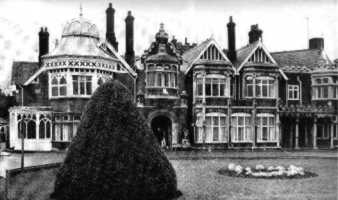 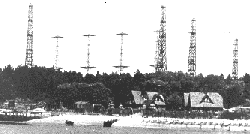 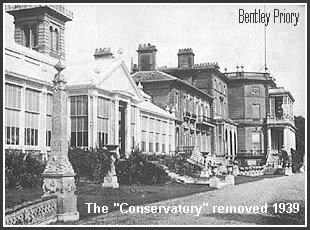 |
StandardizationThe supply chain was revamped. Production of fighters was limited to two proven types, the Hurricane and Spitfire which were already in quantity production to improve agility and speed up output. Fewer aircraft types left in production eliminated some business processes. Standardization provided everything needed for Hurricane and Spitfire production so it could be immediately stepped up. Standardization safeguarded the supply of materials and equipment already allocated for these types and made it possible to divert from other types the necessary parts, stocks of materials and components, and reserves of production capacity for immediate use. Aircraft parts were sourced from hundreds of large and small suppliers. With raw materials scarce and expensive, a Civilian Repair Organization (CRO) was established to recover downed aircraft. Using small civilian workshops and garages, recovered aircraft were either immediately repaired or cannibalized for spare parts.
SimplificationIn the supply chain fighter production was simplified by reducing the number of small and disparate components by concentrating on completed subassemblies (fuselage frames, undercarriages, instrument panels, engines) shipped straight from suppliers. This reduced complexity from the business process execution. At the code breaking facility at Bletchley Park, the complex decoding method (done laboriously by hand) was simplified and given a code name “Ultra”. It was then automated and scaled up using electro-mechanical machines which dramatically speeded up the time required to decode and translate enemy codes. If this operation was completed in a 24-hour window, it provided invaluable information on enemy intent and threats. This gave RAF fighter command early warning of when raids would commence, their size, and their likely targets. Ultra messages could also be carefully harvested to form an extensive knowledge base of the order of battle, right down to the names of individual field commanders and squadron leaders.
ModularityIn the supply chain expertise and best practices were brought in from the automobile manufacturing industry to speed up fighter production. Modularity was introduced where reusable components could be redeployed from bomber production. These could be switched back with changing needs after the air battle. Thus the components were decoupled from physical linkages to the business processes. At RAF Fighter Command modular installations were set up in multiple networks in preference to a monolithic infrastructure. The modular installations were geographically distributed with built in redundancy to avoid any disruptions as these were all enemy targets. The installations formed the backbone of an early warning system:
|
|
In the supply chain the business processes and infrastructure components for fighter production were connected. This allowed the production line to be broken out from large scale factories to much smaller facilities that could be dispersed across locations creating a network of integrated manufacturing. This was useful as all fighter production facilities were top priority targets for the Luftwaffe. |
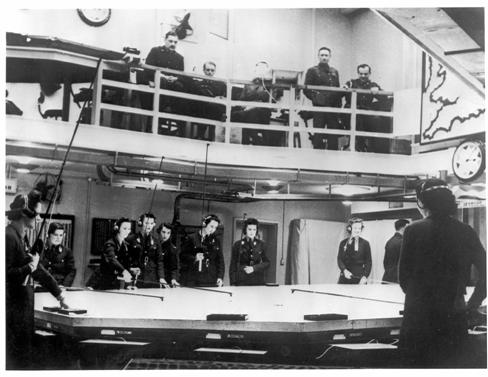
Common PlatformInformation and orders were then cascaded from Bentley Priory to the hierarchy of operations centers at group and sector level where each center had an exact copy of the map table model and determined which fighters were ready and could be deployed from within each squadron. Each center leveraged all the resources at their disposal, including anti-aircraft, and selected the best tactics to use. |
Independent Innovation
One of the critical success factors of the early warning system was to scramble and position fighters with three-minutes of warning. However, to do this each fighter was dependent on a service-delivery chain of providers each delivering its service in a predefined window. For example, radar had 10 minutes, observers had 2 minutes. For weeks each provider independently refined and tested its provisioning of service to meet its set target. Precious seconds were reduced across the whole service-delivery chain refining the fighter-scramble service levels. The overall early warning system was critical as it preserved precious fuel stocks by maximizing fighter time on the ground and by targeting them accurately at enemy planes.
Sense and Respond
The air battle intensified in July 1940 but the RAF held its own in initial skirmishes. The true potential of the Adaptive Enterprise started to become very apparent as it responded to various attacks. As fighters were scrambled to a precise position at 20,000 feet to meet the on-coming raids, other defense systems like anti-aircraft were carefully coordinated to maximize the overall response. Fighters did not waste time searching for the enemy, instead preserving fuel and maximizing the number and effectiveness of sorties. Effectively, this small fighter force, through targeting and flying several sorties a day, appeared to be much larger than it actually was.
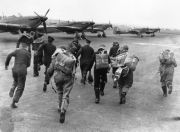
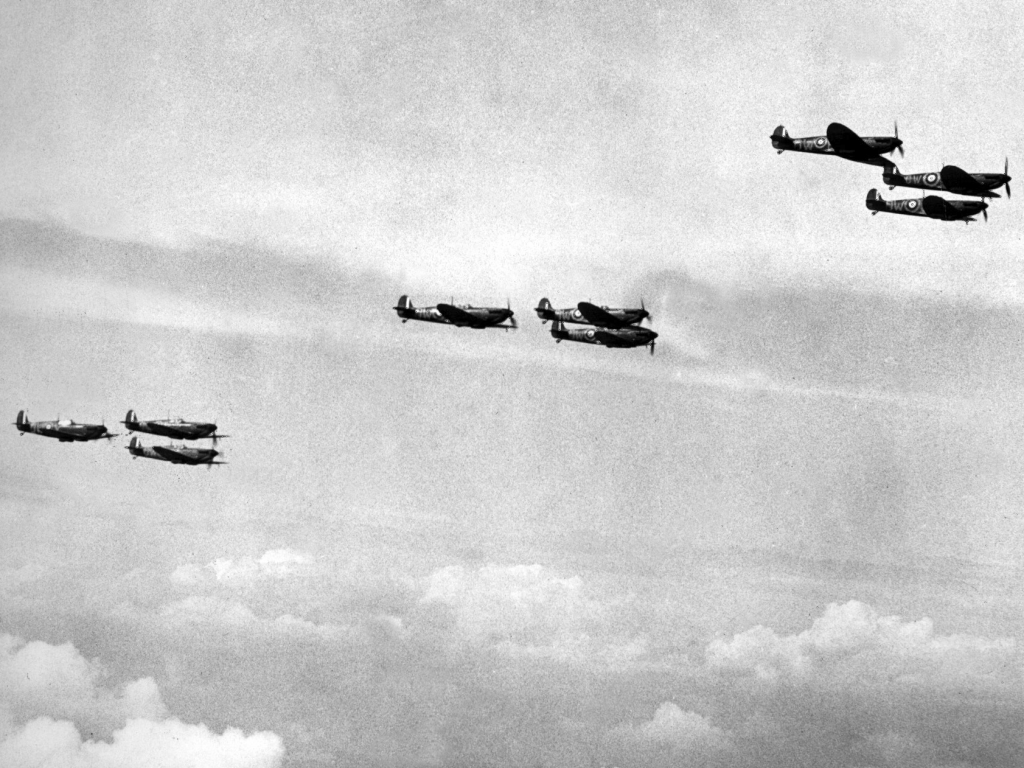
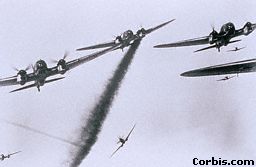
Executive Dashboard
At Storey’s Gate a sophisticated Map Room was created for Churchill and chiefs of staff that served as an executive dashboard. It tracked real-time events from Bentley Priory and other theatres of war, and key performance indicators from the supply-chain. In the Cabinet War Room Churchill and his chiefs collaborated to make decisions. The facility was equipped with good communications to quickly cascade actions out to the hierarchy of military, industrial, and civilian establishments. It was the heart of a real-time decision-making environment fed by intelligence gathered across the organization.
Managing the Big Picture
Storey’s Gate became the center of the whole operation. From here the government followed the air battle, closely monitored the supply-chain, and kept track of events from other battle fronts. Based on accurate and timely information and intelligence, Churchill and his organization were better able to understand what was going on in the broader picture of the war. They were better able to leverage all the resources at their disposal, select the best tactics, and also the most promising strategies and projects. Churchill, empowered by what was effectively the “Adaptive Enterprise”, delivered his most rousing and memorable speeches in the nation’s “darkest hour”, as he refused to surrender.
In the Heat of Battle
By mid August 1940 the Luftwaffe, expecting a short air battle, was surprised at the resilience of the RAF and opted to draw out RAF fighters by increasing the number of its fighters in a raid, and by also targeting known fighter bases. The RAF was only 24 hours from total defeat but through Ultra intelligence the RAF learned of enemy intent and successfully avoided an all out battle of attrition that the Luftwaffe was looking for.
Supply Meets Demand
The sophisticated recovery network through the CRO collected downed pilots and destroyed fighters. In workshops these wrecks were cannibalized for parts to keep existing fighters going. In such a lean operation, even enemy planes were recycled and cast into smelters to provide raw materials for new fighters. The whole supply-chain held absolute minimum inventory to maximize the number of fighters available.
The Adaptive Enterprise synchronized the whole supply-chain to meet fighter losses with replacements delivered on a daily basis. By the end of August, 1940, fighter production hit an astounding figure of 496 per month, a 250% increase.

The Outcome of the Battle
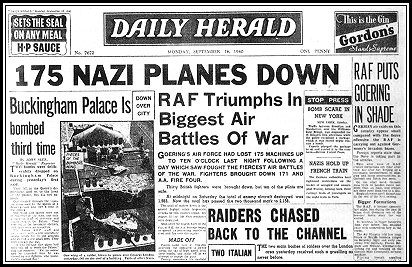
Conclusions
Churchill’s Adaptive Enterprise was successful beyond expectations. So what made the solution so successful? A lot of the credit sits with the leadership of Winston Churchill. He listened to his experts, and together they made the right decisions related to the use of technology. The Adaptive Enterprise was standardized, simplified, and modularized making it agile and maximizing the utilization of its assets.
As today’s organizations move towards an Adaptive Enterprise using emerging technologies, many of the challenges are the same. They need to be stable enough were the IT infrastructure is an enabler to the business. They must sense changing situations and respond to these rapidly. They must understand the impact of business events in real-time, compare these against various scenarios, make sound decisions and take actions to counter competitive threats. They need to be agile enough to anticipate market conditions and customer needs, and react to business events. Through recent advances in emerging technology large organizations can become more agile and mimic the characteristics of a small organization.

